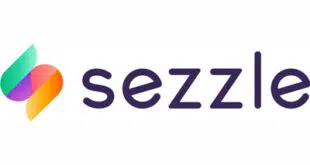Bills and coins have long been off limits to processors because cash transactions are not digital. No longer.
For years, payment processors have expanded their technology stack beyond its core authorization and settlement capabilities to include an array of features to transform themselves into one-stop business-technology shops. Yet, the one part of the payments business that has eluded them is the handling of cash transactions.
That’s because cash transactions can’t be digitized and flowed into the merchant’s bank account—until now.
The Brink’s Co., which has been securely transporting cash for businesses since 1859, in December announced BLUbeem, a secure device into which merchants can deposit their daily cash proceeds onsite, have the deposit electronically recorded by Brink’s, and then receive credit for the deposit in their bank account. The cash is picked up by Brink’s at a later date.
The rollout of BLUbeem, which began in January, is being marketed to processors and point-of-sale solution providers. The technology is part of a larger strategy at Richmond, Va.-based Brink’s to evolve from being a route-based armored-car and security service to a player in the payments industry focused on digital cash payment solutions.
“Most retailers already have a digital solution to accept cards and other payments, but they don’t have a digital solution to manage cash payments, which account for a significant portion of their transactions,” Brink’s chief executive Doug Pertz said at the time of the rollout. “We have that solution, and we believe it will change the way customers and investors look at Brink’s.”
Brink’s wasted no time lining up processors to market BLUbeem. The first two are Alpharetta, Ga.-based Priority Technology Holdings Inc. and goEBt, a Marietta, Ga.-based processor operated by CDE Services Inc., which is a registered independent sales organization of Wells Fargo Bank.
Brinks’s says that, by partnering on BLUbeem, processors can not only open the door to payment volume that was previously off limits to them, they can also get a clearer picture of a client’s overall business and financial health.
“Being able to see a merchant’s cash transactions provides a more holistic view of the business, which will help processors better manage a merchant’s risk levels,” says Don Apgar, director of the Merchant Services Practice for Mercator Advisory Group. “Processors can also bundle BLUbeem with their other services and sell it as a total cash-management solution.”
While similar services are available from other cash-transport companies, they are typically restricted to deposits at a specific bank, not necessarily the merchant’s bank, according to Josh Allen, vice president of digital payments at Brink’s. “They’re not bank-agnostic” like BLUbeem, he says.
The Value Proposition
The idea of electronic cash deposits is expected to be enticing to merchants. A substantial portion of transactions are still made in cash, payments experts say, despite consumers’ steady migration to contactless payments, especially during the pandemic.
In 2020, cash’s share of all payments was 19%, down from 26% in 2019 and 2018, according to the Federal Reserve Bank of San Francisco. While cash’s share of transactions varies among individual merchants, 20% to 25% of the payments taken in by merchants in Priority Technology’s portfolio are cash, the company says.
One market segment seen as particularly ripe for BLUbeem is employers in the gig economy, according to Tom Priore, chief executive and chairman of Priority Technology Holdings.
“In the gig economy, for example, money needs to get collected and distributed to multiple parties in the value chain,” Priore says. “Digitizing cash by turning it into a bank credit increases the velocity of cash [through a company’s business], which is the value proposition.”
Other potential markets for BLUbeem include quick-service restaurants, hospitality merchants, and small retailers that sell low-ticket items, which are typically purchased in cash, Priore adds.
Priore says that partnering with Brink’s will allow Priority, which services more than 250,000 merchants, to bundle BLUbeem with its card-acceptance platform to create an end-to-end payment solution. He expects that will help improve client retention and drive growth into new channels.
Processors can also position BLUbeem as a standalone service to get their foot in the door with merchants that are happy with their current processor when it comes card processing, but that lack a solution similar to BLUbeem, Brink’s’ Allen says.
Another benefit for processors is that a service like BLUbeem can simply make for a better payment-processing experience for merchants, say outside observers. “Processors have the opportunity to help create experiences [that add] amazing value for their merchants and collect a small piece of a transaction they would [otherwise] never see, which is cash,” says Greg Cohen, chief executive of Novi, Mich.-based Fortis Payment Systems LLC.
Brink’s estimates that about 1.6 million retail locations in the United States do not have an effective solution for handling cash payments. Partnering with processors and digital payments providers will enable Brink’s to reach these merchants, the company says.
In addition, Brink’s estimates there are about 2.2. million card-accepting merchants that generate $5,000 a month, on average, in cash sales. Of those merchants, one-third are serviced by Brink’s, which makes BLUbeem a natural add-on service for them, Allen says.
“Even with increased consumer adoption of digital payments during Covid, cash is still a prominent form of payment for many merchants, and still a pain for them when it comes to handling it,” Allen says. “BLUbeem is about simplifying the handling and reconciliation of cash for merchants of all sizes.”
‘Not a Line Item’
Indeed, reducing the cost of handling cash is expected to be the key selling point for BLUbeem, payments experts say. In addition to the cost of paying an employee to handle cash, prepare it for deposit to the bank, and then transport if to the bank for deposit, there’s shrinkage, a euphemism for employee theft of cash in small denominations.
“Rarely do merchants perceive the true cost of accepting cash, and in some cases, it can cost more to accept cash than [to accept] cards,” says Ginger Schmeltzer, a strategic advisor for Aite-Novarica’s Retail Banking and Payments practice. “But merchants don’t necessarily see that cost because the cost of cash acceptance is not a line item on their balance sheet like cards.”
For processors, the key to selling BLUbeem will come down to educating merchants about the cost of handling cash, experts say. “There will need to be a lot of merchant education about how BLUbeem is a more cost-efficient solution for handling cash,” Schmeltzer adds.
Priority declines to reveal what it plans to charge merchants for BLUbeem, though Priore says the service will be competitively priced. Payment-industry experts estimate the going rate will be between 1% and 3% of the transaction value. That’s low enough to make it competitive with card acceptance, but the high side of the range could be too high to get merchants to bite, payments experts warn. Merchants will also pay a modest upfront monthly fee to lease the safe-like cash-storage device, according to Allen.
“Some merchants already charge a cash discount to encourage consumers to pay with cash, so if BLUbeem is closer in price to accepting cards, merchants are bound to question whether it is worth the cost,” says Apgar.
Payments And Banking
Payment experts are not surprised Brink’s developed the service. The company has long serviced independent ATM operators through its affiliation with PAI Inc., the largest privately held U.S. provider of ATM services. Brink’s began its relationship with PAI through an agreement to load cash into ATMs. The relationship grew to include Brink’s servicing the machines, according to Apgar, and culminated in 2021 when Brink’s acquired PAI for $213 million.
“BLUbeem is an extension of what Brink’s did for PAI before acquiring it,” says Apgar.
Brink’s acquisition of PAI, and the rollout of BLUbeem for that matter, are part of the company’s overarching plan to reposition itself as a provider of digital cash payment solutions, Brink’s says. The plan, which Brink’s has dubbed Strategy 2.0,
is receiving positive reviews. In a research note published in February, George Tong, a senior research analyst for Goldman Sachs, wrote that Brink’s “is advancing its digital cash management strategy, or Strategy 2.0, which we believe will lead to stickier, higher growth and higher margin revenue streams.”
Tong goes on to say that “[w]e estimate 85% of the 3mn+ retail and merchant locations in the U.S. do not use an outsourced cash management service, creating an attractive digital cash management market opportunity for [Brink’s].”
When it comes to the revenues Strategy 2.0 can generate for Brink’s, “Management is targeting Strategy 2.0 revenue to double to 5% of total revenue in 2022, and reach 10% of total revenue by 2024,” Tong writes.
With that background, it is not hard to envision the company adding remote deposit capture to BLUbeem, payment experts say. But Schmeltzer is quick to point out that many merchants already subscribe to a bank-operated RDC service. “Banks are competitive when it comes to RDC, but adding it to BLUbeem is a possibility,” she adds.
If nothing else, Brink’s’ foray into processing cash transactions gives it a temporary leg up in a world where banking, payments, and commerce are converging.
“Our mission is to drive the convergence of payments and banking,” says Priore, “and partnering with Brink’s brings us a component that makes that possible with cash.”





